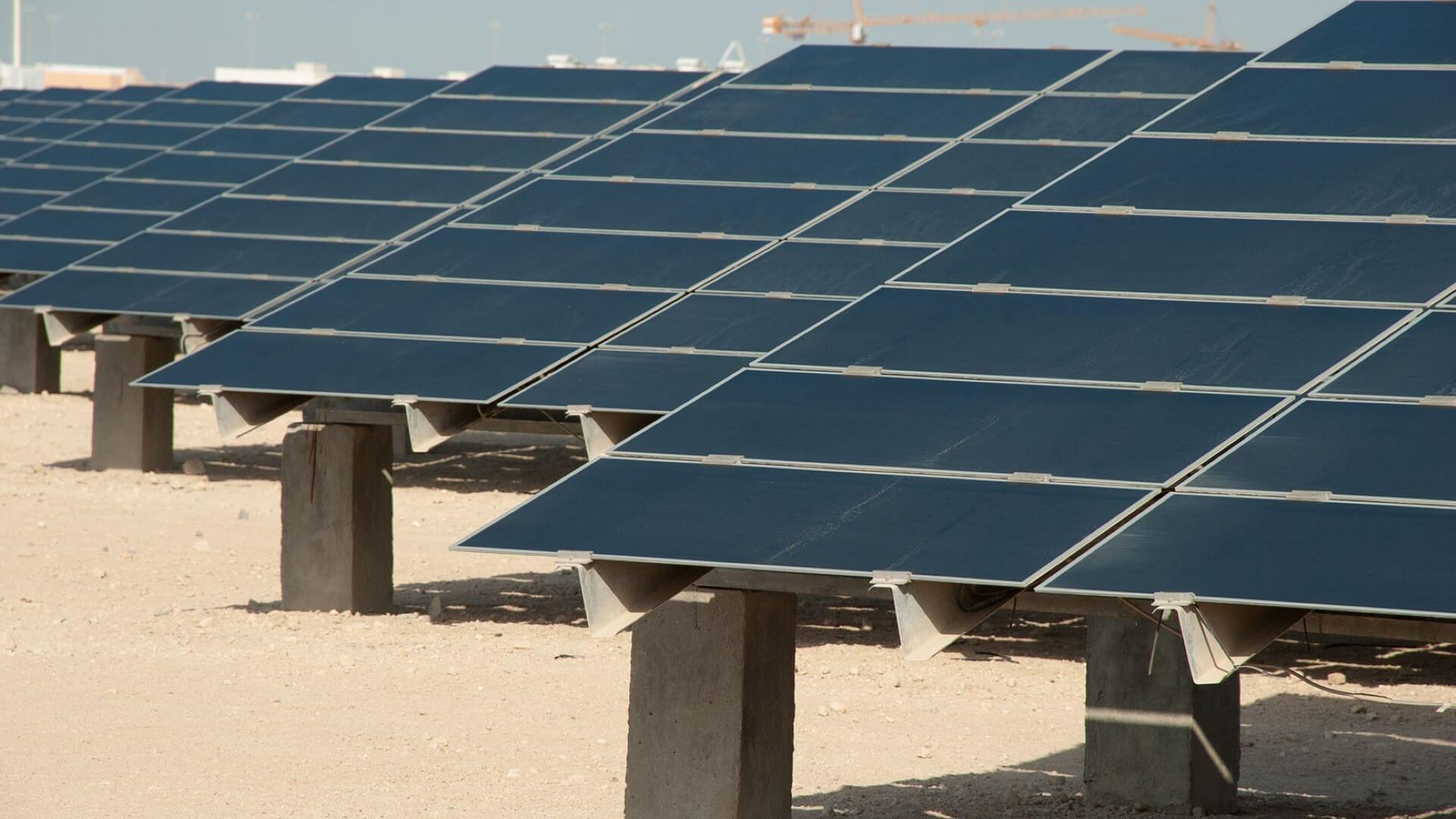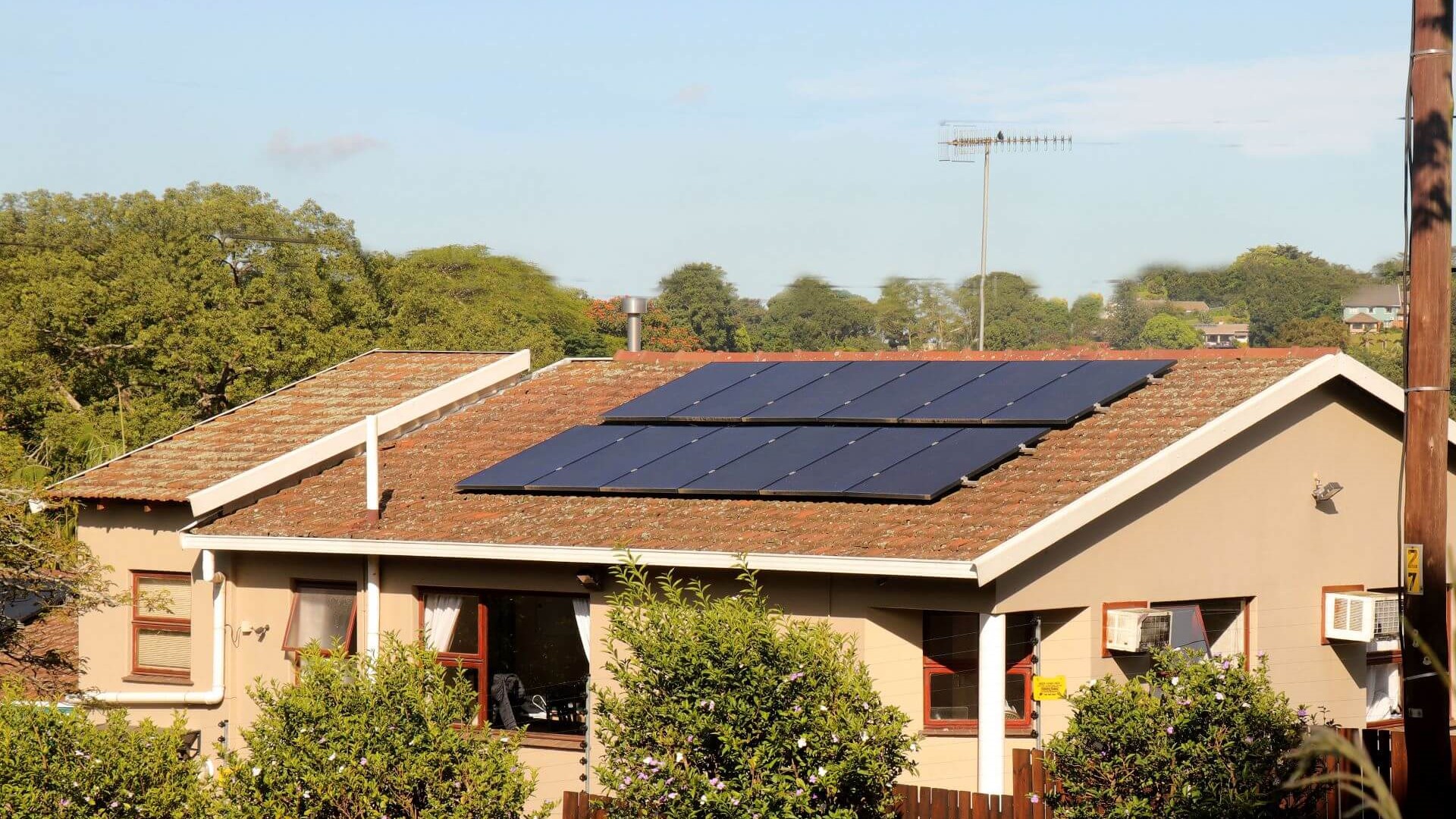UPDATED 1 Sept: The EI library in London is temporarily closed to the public, as a precautionary measure in light of the ongoing COVID-19 situation. The Knowledge Service will still be answering email queries via email , or via live chats during working hours (09:15-17:00 GMT). Our e-library is always open for members here: eLibrary , for full-text access to over 200 e-books and millions of articles. Thank you for your patience.
New Energy World™
New Energy World™ embraces the whole energy industry as it connects and converges to address the decarbonisation challenge. It covers progress being made across the industry, from the dynamics under way to reduce emissions in oil and gas, through improvements to the efficiency of energy conversion and use, to cutting-edge initiatives in renewable and low-carbon technologies.
Building Africa’s solar power – challenges and big opportunities
18/1/2023
8 min read
Feature
An ambitious programme to build Africa’s solar power could underpin sustainable economic development to meet UN SDG 7 goals, write Andreia Nogueira, Paul Cochrane and Nicola Jenvey.
International solar energy providers are finding major business opportunities in Africa as national governments and development agency partners try to foster growth while targeting the UN Sustainable Development Goal (SDG) 7, which encourages access to affordable, reliable, sustainable and modern energy access for all by 2030.
This will not be easy to achieve, despite the continent’s abundant sunlight and the ready availability of solar panels to turn this profuse energy source into electricity.
According to the International Energy Agency’s (IEA) Africa Energy Outlook 2022, in 2021 43% of the population of Africa – around 600mn people – still lacked access to electricity. The IEA noted that Africa is home to 60% of the best solar resources globally, yet only 1% of installed solar photovoltaic (PV) capacity. So, the opportunity is there. It also highlighted that solar PV – already the cheapest source of power in many parts of Africa – will outcompete all sources continent‐wide by 2030.
The IEA predicts grassroots will fuel solar transformation. ‘While it is essential to improve grid flexibility with transmission interconnections, for example, African solar growth will happen mainly through mini-grids and stand-alone systems,’ says the IEA’s sub-Saharan Africa Statistics Manager Gianluca Tonolo.
Tonolo points out that annual investment in solar generation in Africa has been roughly $3bn over the last five years. He suggests this figure could potentially reach $27bn by 2030 if governments delivered on a scenario aligned with Africa’s climate ambitions.
However, Tonolo considers that figure is unlikely to be achieved given that African countries continue to struggle to attract investment, since the cost of capital for power projects can be up to ‘seven times higher’ than in advanced economies. This is because ‘actual and perceived political and currency risks’ restrict a flow of funds, especially from private capital providers, while ‘many providers of public capital find it challenging to find projects that meet their reporting requirements’, Tonolo observes.
Moreover, he remarks: ‘Since [nowadays] more than 100mn Africans cannot afford even the most essential energy services at current grid prices – electricity needs to come with financial support. Especially for decentralised solutions that require maintenance in poor and remote areas to avoid becoming a burden for local communities.’
‘Africa has the potential to be a solar superpower’ – Manoj Sinha, Co-founder and CEO of Husk Power Systems
Adel Baba-Aissa, a board member of the Rwanda-based Africa Solar Industry Association (AFSIA), argues that should grassroots solar maintenance be tied to the economic growth that it generates, such problems could be overcome given off-grid solar is potentially ‘an enabler for productive use (for commercial purposes, agricultural, etc)’.
According to AFSIA's annual Africa Solar Outlook 2022, most of Africa – with the exception of its northern part and South Africa – is simply not suited for massive, large-scale plants, due to grids which cannot absorb significant quantities of solar power.
Nevertheless, Baba-Aissa foresees continued growth in the renewable energy sector in Africa in the next decade, with a mix of on-grid and off-grid projects and public funds applied to both. He notes that many large-scale projects are being developed via an independent power producer (IPP) model, where the local state utility is the buyer of the electricity.
Despite some significant challenges, such as the need for affordable financing, consistency of policy towards renewable energy and an enabling environment for investment, Africa has plenty of available land and very good resources for renewables using solar, wind, geothermal and hydropower.
Africa also has plenty of untapped fossil fuels, such as natural gas, whose development ‘may be affordable, reliable and sustainable, as part of an energy mix with renewable energy’, comments Baba-Aissa. Moreover, he argues that fossil fuels could underpin economic growth, which, in turn, could boost renewables usage.
AFSIA hopes that this potential will encourage investors from around the world to sink money into African energy of all kinds, joining countries like China, India and Turkey, who have been key sources of investment in the past few years. By contrast, ‘other countries have maybe been reluctant’, says Baba-Aissa, noting how multiplication of potential partners could increase competition and reduce investment costs for the African energy sector.
For example, last August (2022) the main generator and supplier of electricity in Ghana, the Volta River Authority, in partnership with the German Development Bank KfW, contracted Norway-based Multiconsult to assess the potential for installing a floating solar power plant on Lake Volta in Ghana, the world’s biggest man-made lake.
Baba-Aissa also mentions the planned construction of a green hydrogen plant in Namibia, which combines an 85 MW solar park with hydrogen production. In November 2022, French power producer HDF Energy partnered with the European Investment Bank and the Namibian government to start producing electricity at the coastal Swakopmund site in 2024.
In September 2022, UK-based Bboxx consolidated its position as a source of clean energy solutions in Africa with over 35 MW of installed solar capacity by buying the Senegal-based solar energy provider PEG Africa.
The US-based leading mini-grid developer Husk Power Systems (winner of the Energy Institute’s 2022 Access to Energy Award) is also building a flexible renewable power infrastructure in Africa. After entering Tanzania a decade ago, the company aims to build 500 mini-grids in Nigeria by 2026. Co-founder and CEO Manoj Sinha says the company is ‘actively exploring other markets with significant energy access gaps, such as the Democratic Republic of Congo (DRC), Ethiopia, Madagascar and Uganda’. But this path has not been easy. Mini-grid developers face several challenges, such as ‘weak logistics and domestic supply chain, foreign currency exposure and policy and regulatory uncertainty’, he says.
Sinha maintains that ‘Africa has the potential to be a solar superpower’, and Nigeria is probably the best example of countries in sub-Saharan Africa developing innovative solar-based rural electrification programmes that might generate energy exports to Europe and elsewhere. Yet, he recognises that investment in transmission and distribution ‘is often overlooked’ in the African power sector.
That is why mini-grids seem to be the best solution for the coming years. Sinha explains that the Husk Power Systems’ mini-grids are operated by the company for the lifetime of the system, ‘so there is no burden on any individual customer.’
Key current solar players in Africa are Egypt and South Africa.
Egypt’s solar initiatives
Egypt has major plans to bolster the share of renewable power in its energy mix. In 2022, the government brought forward an earlier target of 42% of renewable power by 2035 to 2030.
But the country has work to do. ‘It is now around 12–13%, so missed its 2022 target of 20%,’ says Dr Justin Dargin, a Middle East energy expert at the Carnegie Endowment for International Peace. Egypt has 6.8 GW of installed solar, along with wind and hydropower, and plans to reach 10 GW by the end of 2023.

Egypt aims to derive 42% of its energy from renewable power by 2030, such as through this photovoltaic installation outside Cairo
Photo: Paul Cochrane
Egypt has all the conditions to be a major solar power producer, with solar radiation for 9–11 hours a day, and an abundance of land, especially in the Western Desert.
The government is encouraging PV installation in private dwellings, but has not yet had a lot of buy-in from Egyptians. ‘About 1,000 roof-top solar panels have been installed under an Egyptian policy promotion scheme and announced feed-in tariffs. But there’s significant amounts of red tape involved,’ says Dargin. A further obstacle has been the government requirement of ownership of a building to install solar panels. ‘Much of the populace lives in the Greater Cairo area, with over 20mn people, but many don’t own their building,’ he adds.
A further issue is the upfront capital costs of installation, with imported technology becoming more expensive with the Egyptian pound (EGP) depreciating by 34% to the US dollar in 2022. Egypt’s energy grid also needs to be overhauled to absorb new solar power generation, despite having invested about $7bn over the past decade, notes Dargin.
Further improvements in the regulatory environment are required to attract major investors. ‘Egypt needs a multi-pronged strategy, from regulatory reform to incentives, and to renovate structural aspects, both on the demand and supply side, to transmit energy efficiently across the national grid,’ Dargin comments.
However, further developments are underway, with Egypt signing a $1bn agreement in November 2022 with the International Finance Corporation for a 500 MW solar plant near the southern city of Aswan, to be developed by United Arab Emirates-based AMEA Power, and for a 500 MW wind power project.
South Africa initiatives
In South Africa, solar PV power capacity is expected to reach 5,000 MW by the end of 2023, with compound annual growth exceeding 11% to 2028, according to the country’s Council for Scientific and Industrial Research.
India-based research company Mordor Intelligence noted in a report on the South Africa solar PV market (2023–2028) that the country has more than 4 GW of solar energy connected to its grid at present, with the residential sector accounting for less than 20%. The government’s long-term energy plan will add another 6 GW by 2030, with the residential sector expected to grow through a national electrification programme. Increasing personal incomes, urban migration and decreasing solar PV costs will also boost renewable electricity use in South Africa.
According to the South African Photovoltaic Industry Association, South Africans procured about $128mn of residential solar PV panels in the first five months of 2022 alone. In June, the National Energy Regulator of South Africa approved 15 solar PV projects totalling 139 MW – 11 generation facilities linked to the national Eskom grid and four for commercial use linked to municipal networks.

Solar installation in residential properties is climbing as South Africans battle escalating electricity costs and load shedding (rotational power cuts) that can see parts of the country without electricity for up to 12 hours at a time
Photo: Terry Haywood
Mining company Harmony Gold has started construction of three 10 MW solar PV projects as part of its environmental, social and governance (ESG) programme, and anticipates saving more than $29.3mn annually in power costs upon reaching full production.
Such growth shows what can be achieved in Africa as regards solar energy and sustainable development. Especially should investment be combined with careful planning and reliable maintenance.
